General Characteristics of the Model¶
MI’s iSDG model is a System Dynamics based model for comprehensive and participatory development planning. By this we mean that the model:
Integrates economic, social, and environmental factors;
Represents the important elements of complexity – feedback relationships, non-linearity and time delays that are fundamental for proper understanding of development issues;
Is transparent in its structure, assumptions, equations, and data requirements, so as to serve as a participatory tool in consensus building and policy discussions;
Is flexible enough to be customized to specific countries by trained users based on country-specific conditions;
Simulates the medium- and long-term consequences of alternative policies; and
Allows for easy comparison to reference scenarios and supports advanced analytical techniques, such as sensitivity analysis and optimization.
The model provides policymakers and other users with an estimate of the consequences to be expected from current and alternative choices. Such estimates are not to be taken as exact forecasts (no model can accurately forecast long-term development trends) but as reasonable and coherent projections, based on a set of clear assumptions.
The iSDG model is especially well suited to analyze the interactions among policies directed to achieve the SDGs. All sectors of the model are interacting dynamically; hence any policy introduced in any given sector has cross-sector impacts that spread throughout the model. Any number of policies can be simultaneously simulated, and it supports the analysis of the contribution of each policy to the final result for any indicator; and of synergies among policies.
SDG indicators in the iSDG core model¶
The iSDG model includes indicators and relevant policies for all 17 SDGs. The list below provides an overview on the indicators relevant to each Goal that are included (directly or through relevant proxies) in the Core version of the model, for a total of 78 indicators. Further indicators can be included in the process of customization to a particular country’s characteristics and analytical needs.
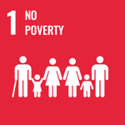
1.1.1 [1] Proportion of population below the international poverty line, by sex, age, employment status and geographical location (urban/rural)
1.2.1 Proportion of population living below the national poverty line, by sex and age
1.4.1 Proportion of population living in households with access to basic services
1.5.1 Number of deaths, missing and persons affected by disaster per 100,000 people
1.5.2 Direct disaster economic loss in relation to global GDP
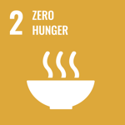
2.1.1 Prevalence of undernourishment
2.2.1 Prevalence of stunting among children under 5 years of age
2.2.2 Prevalence of malnutrition among children under 5 years of age, by type (wasting and overweight)
2.3.1 Volume of production per labour unit by classes of farming/pastoral/forestry enterprise size
2.4.1 Proportion of agricultural area under productive and sustainable agriculture
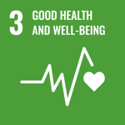
3.1.1 Maternal mortality ratio
3.1.2 Proportion of births attended by skilled health personnel
3.2.1 Under-five mortality rate
3.2.2 Neonatal mortality rate
3.4.1 Mortality rate attributed to cardiovascular disease, cancer, diabetes or chronic respiratory disease
3.6.1 Death rate due to road traffic injuries
3.7.1 Proportion of women of reproductive age who have their need for family planning satisfied with modern methods
3.7.2 Adolescent birth rate per 1,000 women in that age group
3.8.1 Coverage of essential health services
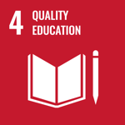
4.1.1 Proportion of children and young people achieving at least a minimum proficiency in reading and mathematics, by sex
4.3.1 Participation rate of youth and adults in formal and non-formal education and training in the previous 12 months, by sex
4.5.1 Parity indices (female/male, rural/urban, bottom/top wealth quintile and others such as disability status, indigenous peoples and conflict affected as data become available)
4.6.1 Percentage of population in a given age group achieving at least a fixed level of proficiency in functional (a) literacy and (b) numeracy skills, by sex
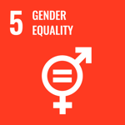
5.5.1 Proportion of seats held by women in national parliaments and local governments
5.6.1 Proportion of women aged 15-49 years who make their own informed decisions regarding sexual relations, contraceptive use and reproductive health care
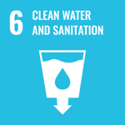
6.1.1 Proportion of population using safely managed drinking water services
6.2.1 Proportion of population using safely managed sanitation services, including a handwashing facility with soap and water
6.4.1 Change in water use efficiency over time
6.4.2 Level of water stress: freshwater withdrawal as a proportion of available freshwater resources
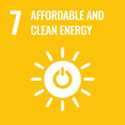
7.1.1 Proportion of population with access to electricity
7.2.1 Renewable energy share in the total final energy consumption
7.3.1 Energy intensity measured in terms of primary energy and gross domestic product
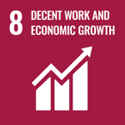
8.1.1 Annual growth rate of real GDP per capita
8.2.1 Annual growth rate of real GDP per employed person
8.4.1 Material footprint (MF) and MF per capita, per GDP
8.4.2 Domestic material consumption (DMC) and DMC per capita, per GDP
8.5.2 Unemployment rate, by sex, age and persons with disabilities
8.6.1 Proportion of youth (aged 15-24) not in education, employment or training
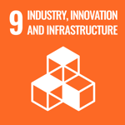
9.1.1 Proportion of the rural population who live within 2 km of an all-season road
9.2.1 Manufacturing value added as a proportion of GDP and per capita
9.2.2 Manufacturing employment as a proportion of total employment
9.4.1 CO2 emission per unit of value added

10.1.1 Growth rates of household expenditure or income per capita among the bottom 40 per cent of the population and the total population
10.2.1 Proportion of people living below 50 per cent of median income, by age, sex and persons with disabilities
10.4.1 Labour share of GDP, comprising wages and social protection transfers

11.5.1 Number of deaths, missing and persons affected by disaster per 100,000 peopled
11.5.2 Direct disaster economic loss in relation to global GDP, including disaster damage to critical infrastructure and disruption of basic services
11.6.1 Percentage of urban solid waste regularly collected and with adequate final discharge with regard to the total waste generated by the city
11.6.2 Annual mean levels of fine particulate matter (e.g. PM2.5 and PM10) in cities (population weighted)
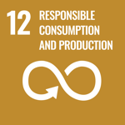
12.2.1 Material footprint (MF) and MF per capita, per GDP
12.2.2 Domestic material consumption (DMC) and DMC per capita, per GDP
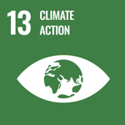
13.1.2 Number of deaths, missing and persons affected by disaster per 100,000 people
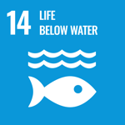
14.4.1 Proportion of fish stocks within biologically sustainable levels
14.5.1 Coverage of protected areas in relation to marine areas

15.1.1 Forest area as a proportion of total land area
15.1.2 Proportion of important sites for terrestrial and freshwater biodiversity that are covered by protected areas, by ecosystem type
15.5.1 Red List Index
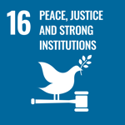
16.1.1 Number of victims of intentional homicide per 100,000 population, by sex and age
16.5.2 Proportion of businesses who had at least one contact with a public official and who paid a bribe to a public official, or were asked for a bribe by these public officials, during the previous 12 months
16.6.2 Proportion of the population satisfied with their last experience of public services
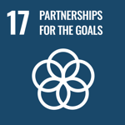
17.1.1 Total government revenue as a proportion of GDP, by source
17.1.2 Proportion of domestic budget funded by domestic taxes
17.3.1 Foreign direct investments (FDI), official development assistance and South-South Cooperation as a proportion of total domestic budget
17.4.1 Debt service as a proportion of exports of goods and services
Model boundaries and time-horizon¶
iSDG’s structure represents development mechanisms that can be found in most developing and industrialized countries, and covers relevant indicators for all 17 SDGs. As such, it covers a broad range of issues: from poverty to environmental degradation, from education to health, from economic growth to demographic expansion. The following paragraphs describe the fundamental boundaries of the model in various dimensions.
Endogenous, exogenous and excluded variables¶
A first level of boundaries defines what variables are considered endogenous, exogenous or excluded from the model. iSDG’s fundamental approach is to endogenously represent variables that are considered an essential part of the development mechanisms under analysis. For example, the Gross Domestic Product (GDP) and its main determinants, population and its main determinants, and the demand and supply of natural resources and their main determinants are endogenously calculated.
Variables that have an important influence on the issues analyzed, but which are only weakly influenced by the issues analyzed, are exogenously represented. For example, rain cycles, the grants received, or the exchange rate are exogenously determined. In addition, since the focus of iSDG is on long-term development issues, inflation and interest rates are also exogenously represented. For specific country applications, where supported by evidence, these variables can be made endogenous in the model.
Finally, variables that are outside the scope of the analysis, that have no quantifiable effect on the issues being analyzed, or that are not likely to change over the time horizon considered, are not explicitly represented in the model. Examples include earthquakes, ethnic issues, cultural diversity, etc. Note that the fact that such variables are not explicitly represented in the model does not mean that their effect on the system is neglected, but rather that their effect is already embedded in other parameters of the model. In other words, excluded variables are simply held constant in the analysis.
Level of aggregation¶
Another aspect of model boundary defines the level of aggregation. The base iSDG model is conceived as a national model and, from a geographic perspective, data are aggregated at the national level. All variables represent therefore the national total (or average) of their real-world counterparts. For example, agriculture production represents the total agriculture production in the country, and it is not disaggregated into region of origin. The literacy rate represents the average for the whole country, and it is not disaggregated by province.
Although geographical disaggregation is not used in iSDG, the main social, economic and environmental variables are broken down in sub-components as required in order to analyze the focus issues. For example, population is divided into 101 age-cohorts and 2 genders, and the age-gender distinction is used in most social indicators; production is divided into industry, services and agriculture, this last further divided into crops, fishery, animal husbandry and forestry; land is divided into forest, agriculture land, fallow land, urban land and desert land. Full details on the level of aggregation for each variable are provided in the individual sections of this documentation.
Geographic boundaries¶
The focus of the iSDG is on the specific country being analyzed. Although the model can also address the impacts of developments in the rest of the world (e.g., oil prices, global GDP growth) on the country, the model is centered on the internal issues of the country. The model can therefore address questions of what a country can do to help further its own progress and sustainability.
The model also determines outputs from the country to the rest of the world, e.g. CO2 emissions. However, the small country assumption is made, and the performance of the country is assumed to have no relevant effect on the rest of the world. For example, oil prices are generally considered exogenous, as well as other commodities’ prices, and a spike in local demand would not affect global prices. This assumption is generally relaxed when the country being analyzed has a particularly relevant role at world level with respect to one of the issues analyzed. For example, when analyzing energy problems in the USA, oil prices are considered endogenous.
Time horizon¶
iSDG is built to analyze long-term development issues. The typical time horizon for simulation starts in 2000 and extends to 2030, however can be shortened or prolonged on either end to fit the analysis required.
Beginning the simulation in 2000 ensures that, in most cases, the long-term trends characterizing the issues being investigated can be fully observed and replicated. The starting date of the simulation is however highly dependent on data availability, and often has to be adjusted to more recent periods, for which country data are reliable.
iSDG projections extend in the future to ensure that the long-term effects of policies implemented today on the development of the country can be well appreciated. The simulation can be extended further into the future, e.g. to 2050, which requires a careful assessment of the exogenous inputs to be used (e.g. projections of global GDP growth).
